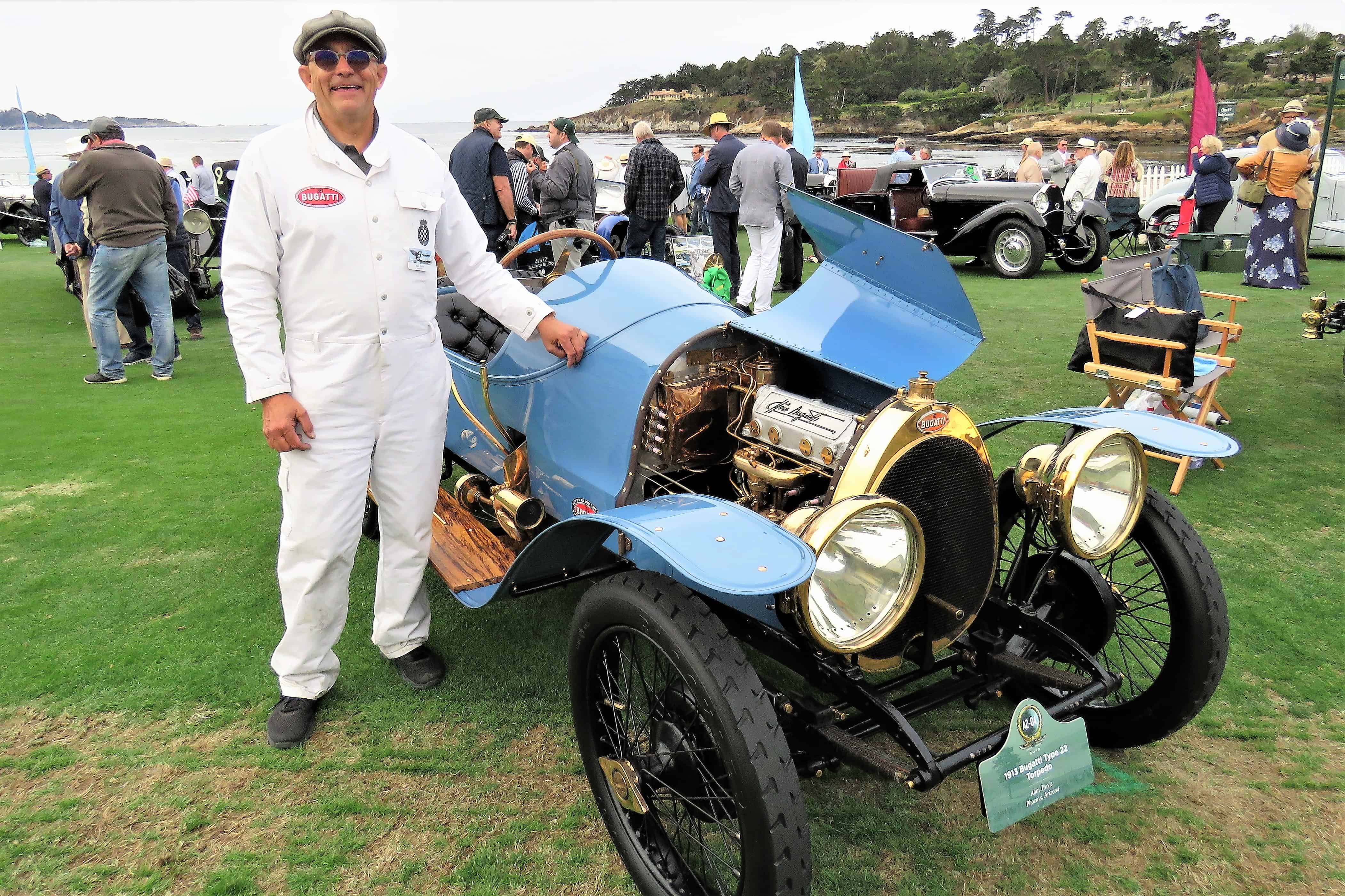At the recent Pebble Beach Concours d’Elegance, I spotted an unexpected familiar face among the Brass Era cars. It was that of an antique-car guy whom I’ve known for many years but hadn’t expected to spot in this rarified venue of glorious classic cars and wealthy people.
Yet there he was, Alan Travis of Phoenix, Arizona, dressed as usual in period- and marque-correct coveralls and standing next to his latest automotive obsession, which was something else I didn’t expect to see – a 1913 Bugatti Type 22 Torpedo.
This was a sports car from the very dawn of Ettore Bugatti’s magical reign as maestro of motorsports, whose brilliant machines set lofty standards for others to chase. And if anyone was going to restore such a rarity and bring it to Pebble Beach, it would be Alan Travis.
In his cheerfully self-effacing way, Travis was telling all who stopped to listen everything you’d ever want to know about this early Bugatti, based on the Type 13 race car, and his restoration of it with his own two hands.
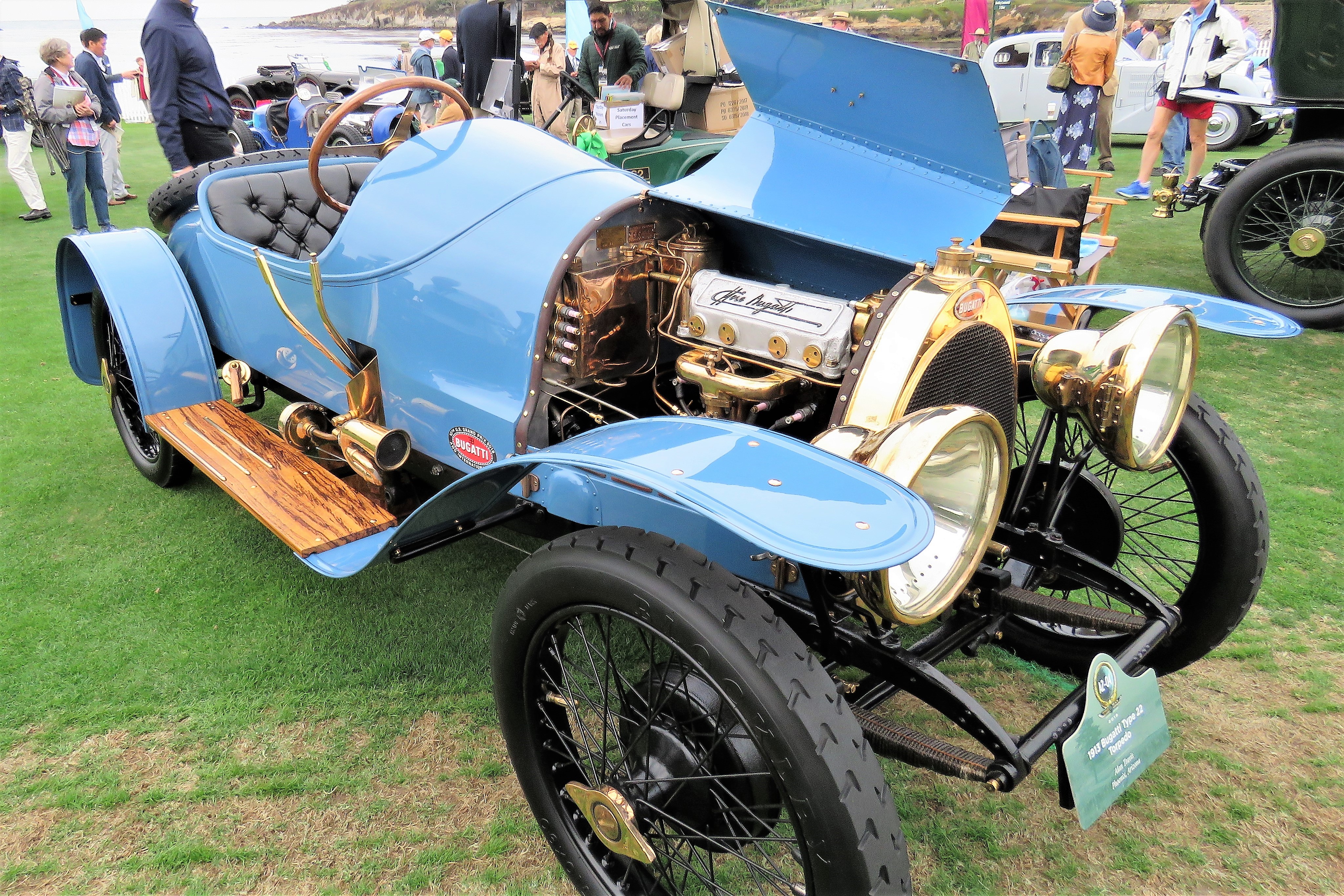
“I got it 3-and-a-half years ago from Sweden,” he said. “I always wanted a 1913 Bugatti. It took me 3,500 hours to restore. I have about 7-or-8,000 miles on it since I restored it.”
And where has he driven this tiny jewel of an antique roadster? Just about everywhere, it seems.
“From horseless-carriage car tours to the International Bugatti Grand Prix to several race tracks,” he said. “We’ve done a lot of racing with it. I even did an off-road trials with it.
“And now, now we show up at Pebble Beach.”
Not only is this the first time Travis has ever shown a car at Pebble Beach, he confided, this is the first time he has ever been to the world-famous concours.
“First time I’ve been a spectator or an entrant,” he said with his customary grin. “The first time.”
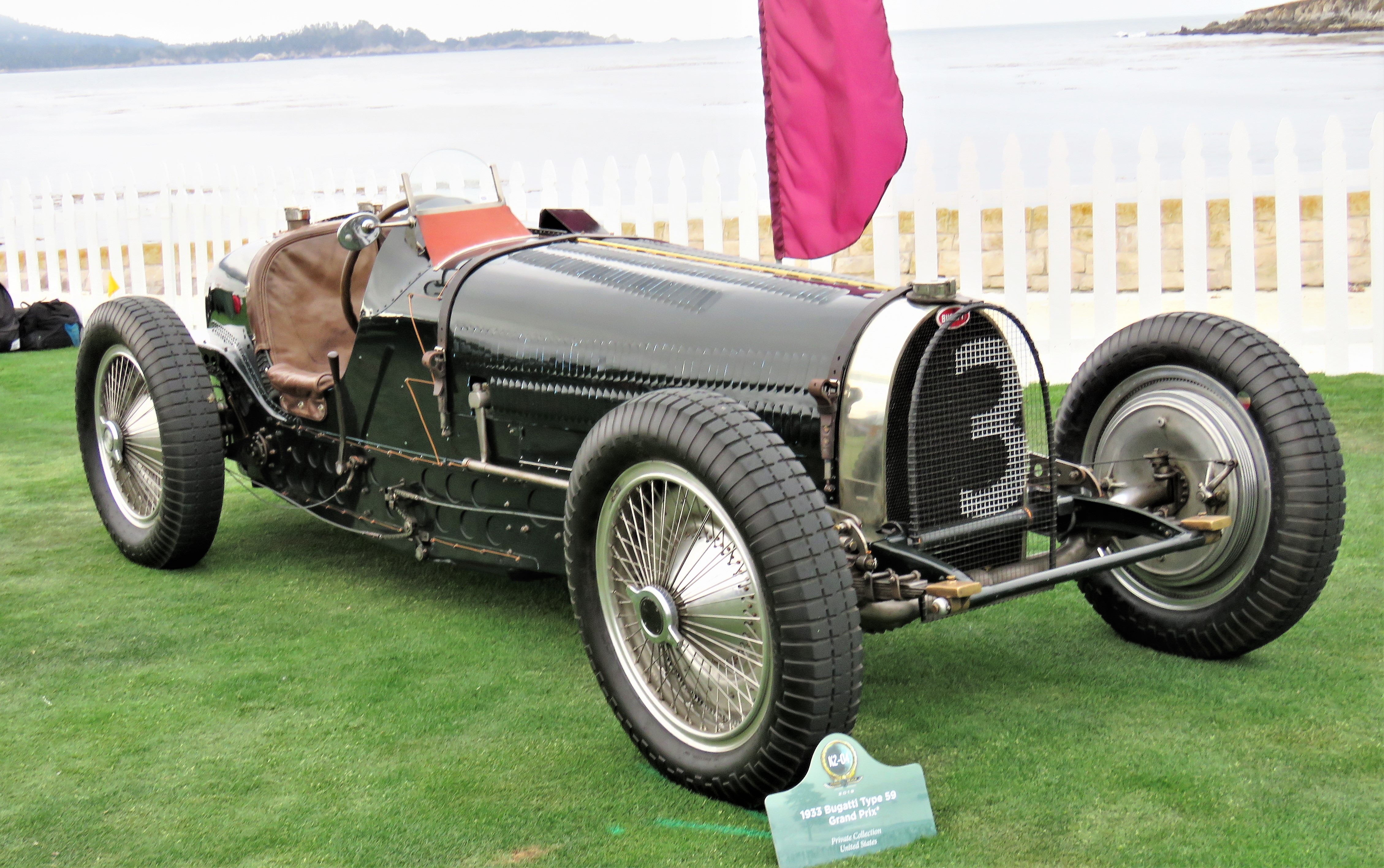
Pebble Beach this year recognized the 110th anniversary of the 1909 founding of Bugatti in Molsheim, France, with two special classes for its more-famous sports and racing models, the Type 57 and Type 59.
The Type 22 was entered in the European Antique class, where it may have not won its class but certainly thrilled Travis just to be there.
Travis is the greatest old-car aficionado I know, a totally hands-on guy who cares only for antique automobiles from around the turn of the 20th Century, and which are also very special sporting cars. And he’s had a bunch of them, all of which he drives.
He’s a guy who has won The Great Race twice, once in a 1916 Mitchell and the second time in a 1910 Knox, which threw a connecting rod right at the start, punching a hole in the engine block, but which Travis and his crew patched up to carry on and win it all.

He’s a great ambassador for the collector car hobby as well, relishing the times that he spends telling appreciative audiences about his ancient automobiles, their workings and history, especially for groups of young people.
I met up with him a few months back at a local Phoenix show, where he was exuberantly demonstrating the arcane workings of his 1909 Delage Type R Voiturette, a French runabout that he called “one of the most advanced cars built at that time.” Despite the car’s rarity, fragility and value, he was allowing anyone who asked to climb aboard. That’s pretty normal for him.
Some of the other early cars and motorcycles that he’s owned, driven extensively and publicly demonstrated include a 1904 Mitchell, a 1915 Scripps-Booth Vitesse, 1907 Renault A1 35-45, a 1907 Delaunay-Belleville, a 1914 Excelsior board-track racing motorcycle and a 1915 Harley-Davidson motorcycle.
His oldest car, so far at least, is an 1898 Jeanperrin Voiterette Vis-à-vis, one of the cars he showed at the erstwhile Arizona Concours d’Elegance. He even took the quaint car, one of the oldest drivable vehicles in the U.S., on that year’s concours road tour, accompanied by his usual passenger, his understanding wife, Mary, who was also with him at Pebble Beach.
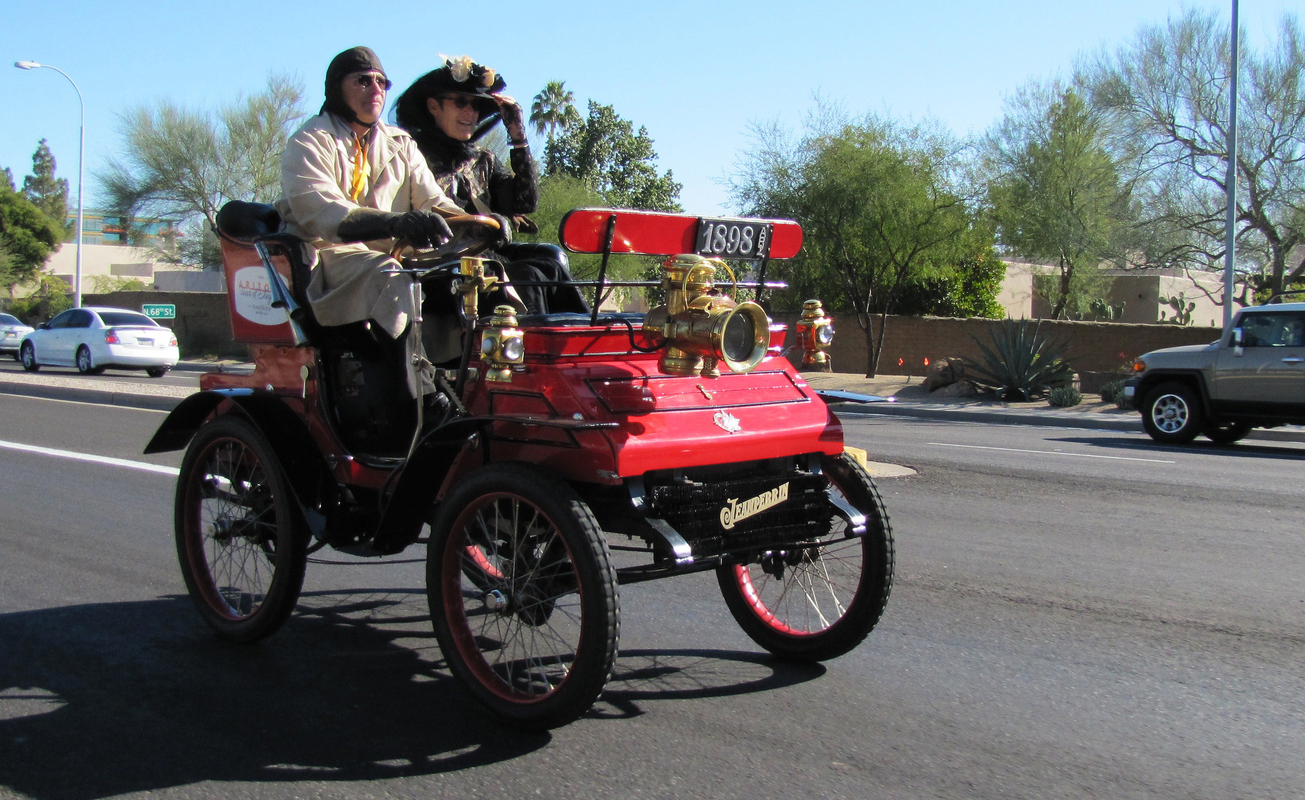
Naturally, Alan and Mary Travis motored in the 1913 Bugatti on the 70-plus-mile Pebble Beach Tour on the Thursday before the concours. It did just fine, he said.
“It’s the oldest one (Type 22) that’s driven in North America for sure, and probably the second or third oldest in the world that runs,” he said at the concours that Sunday.
Travis knew that he was showing something that was quite spectacular in its own right, even for Pebble Beach.
“This is the actual starting point of sports racing extremely fun cars,” Travis noted. “This is 1913, and this is a 70-mph car. Little car, super high performance, cornering, steering, braking. And what would anybody need that for in 1913?
“So this is like getting a Bugatti today. You don’t need a car that goes 250 miles an hour.”
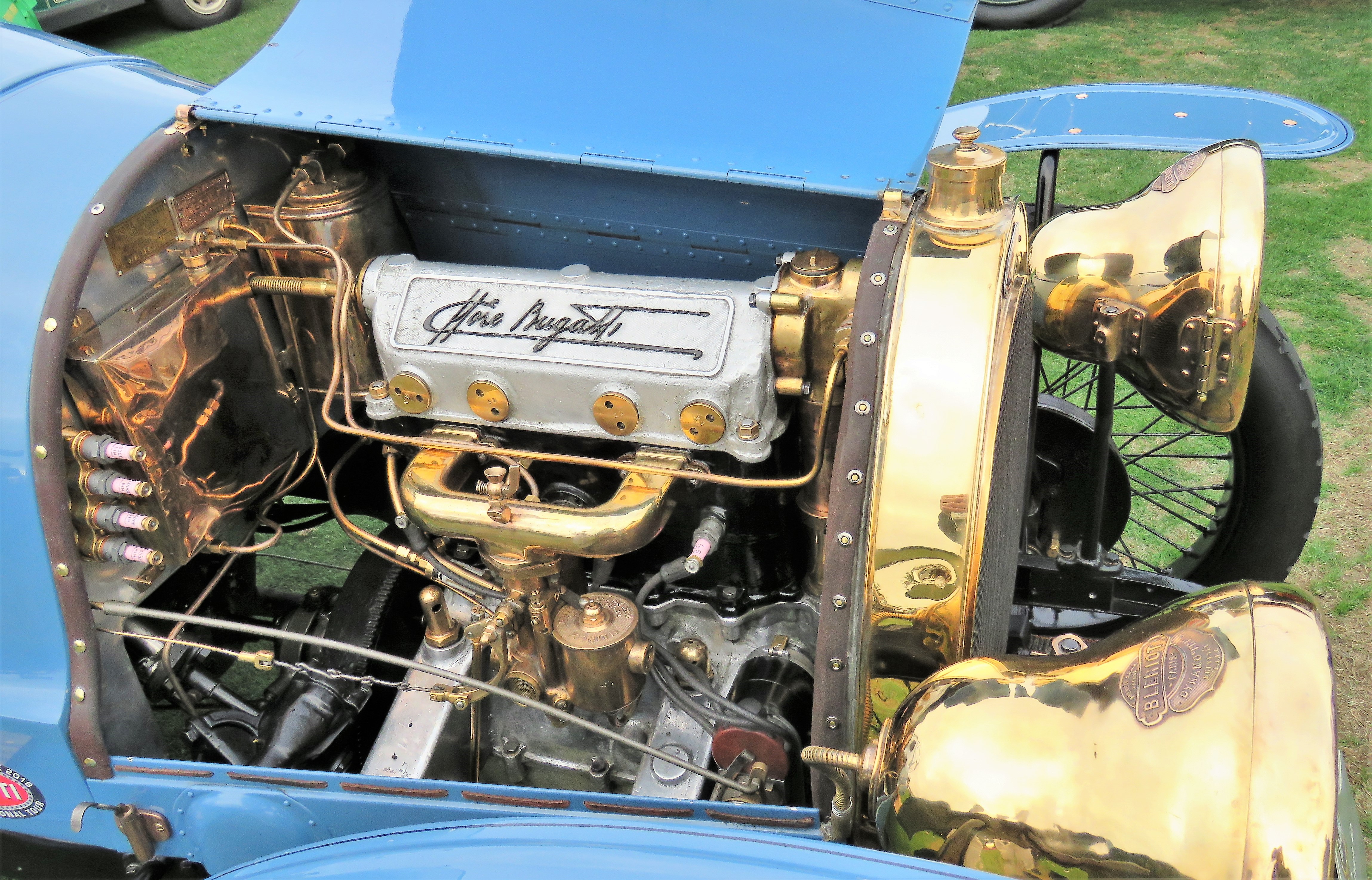
The 900-pound Type 22 was a departure from the huge competition cars of its day, its advanced-design 1,400cc 4-cylinder engine propelling the blue projectile ahead of the pack.
“This will go 70 with 1,400 cc,” Travis said. “Nobody would ever make a car in 1913 with 1.4 liters and expect it to go at all. Once he (Bugatti) started making those little cars with lots of rpm, they were unbeatable until 1930 or ‘31 when Alfa came on the scene and they took over for a while.”
A look at the engine exposes something else that’s very special – Ettore Bugatti’s bold signature on the aluminum valve cover.
“His first motors, he was so proud of what he had achieved that he signed his motors,” Travis said. “It’s as big as the entire engine, his signature.
“It’s like Michelangelo signing his first statues. He (Bugatti) knew he was an artist and he knew he was an engineer and he was going to be famous forever, so his very first ones, he signed.
“That’s amazing, stunning.”
Just like any conversation about ancient automobiles with Alan Travis.



